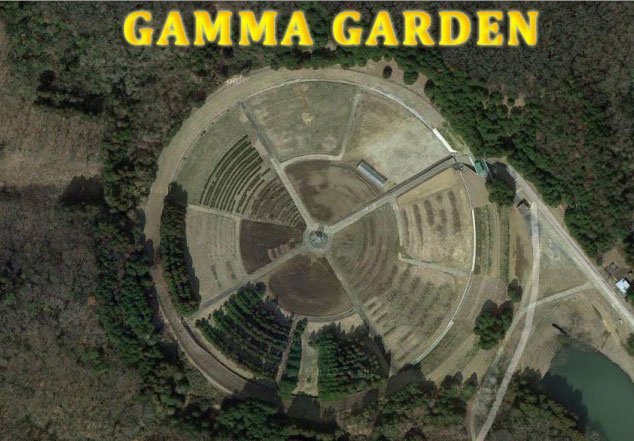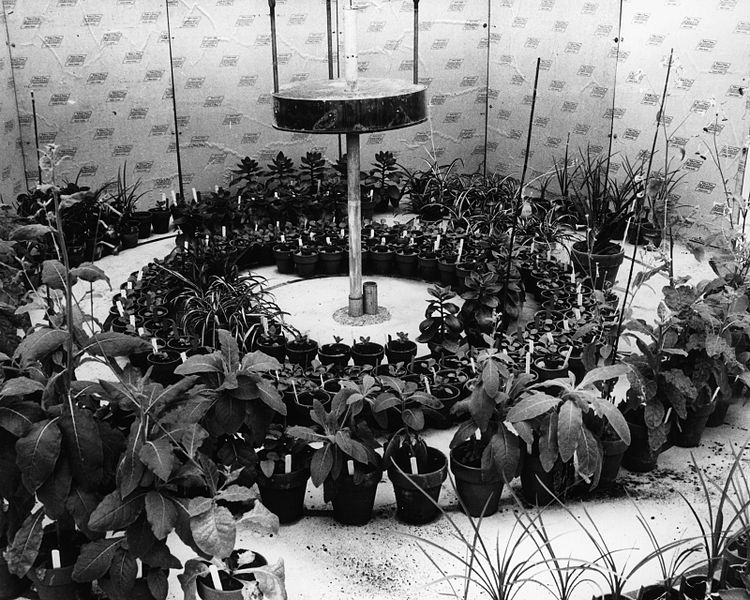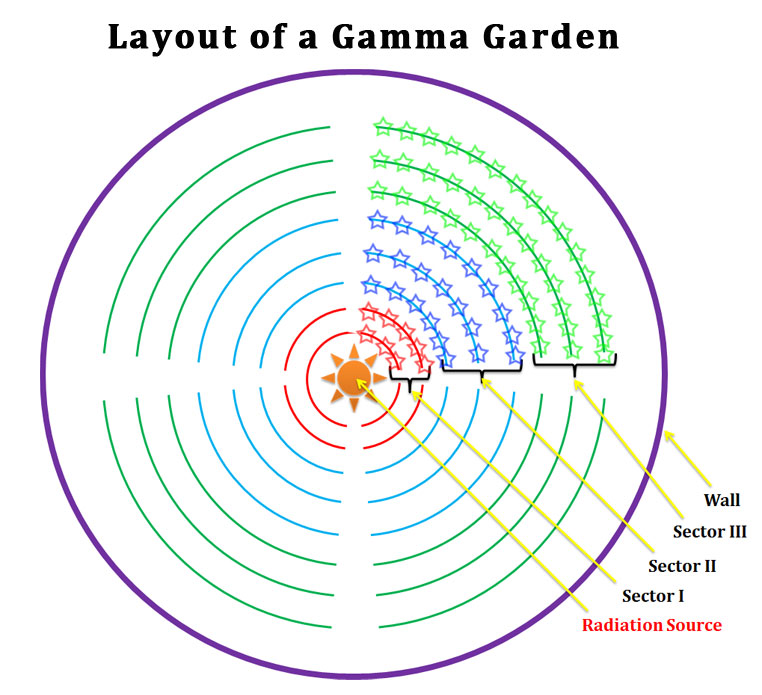Gamma garden or Atomic garden is a concept popularized after the Word War 2 for the peaceful use of atomic energy (atoms for peace) for the crop improvement. They are a type of induced mutation breeding where radioactive sources particularly gamma rays from cobalt -60 or Caesium-137 are used to induce desirable mutations in crop plants.
Gamma Garden
Ø Gamma gardens are “area subjected to gamma irradiation of crop plants”.
Ø They are giant structures, enclosed by thick high wall to protect the plants and animals outside.

Satellite Map of a Gamma Garden at Institute of Radiation Breeding, Hitachiohmiya, Japan
Ø The purpose of a gamma garden is to irradiate the whole plants during different stages of development and of varying duration.
Ø The source of radiation used is Cobalt-60.
Ø Rarely Caesium-137 is also used as the source of radiation.

a small gamma garden with central radiation source
Ø The strength of 60Co is 200 curies.
Ø The source of radiation is located at the centre.
Ø The area is divided into concentric circles with varying intensity of radiation.
Ø Plants to be irradiated are arranged as concentric circles around the radiation source.
Ø The intensity of radiation decrease as one move away from source of the radiation.
Ø The radially arranged plants in gamma garden can be grouped into three sectors.
Sector – I
o They are plants nearest to the central radiation source.
o Plants in the sector I usually die immediately due to the high dose of radiation.
o They are not used in further experiments.
Sector – II
o This include plants located next to the sector I.
o These plants develop severe tumors, malformations and other abnormalities.
o These plants are also not used in further experiments.
Sector – III
o They include plants located next to sector III.
o They are the actual plants of interest in Gamma gardens.
o They may have random mutations not severe enough to damage the crop plant.
o The variations obtained in the sector III are used in further breeding experiments.
o They can be used as a source of variation in hybridization or can be directly released as a variety.

Ø The first gamma garden: in Long Island, New York, USA.
Ø First gamma garden in India: Bose Research institute at Calcutta (1959).
Ø Second gamma garden in India: Indian Agricultural Research Institute (1960).
Advantages of Gamma Garden
Ø Gamma gardens can produce large amount of variations within a short time.
Ø Desirable mutants can be released directly as a new variety.
Ø Gamma gardens are good examples of the peaceful use of atomic energy for human welfare.
Disadvantages of Gamma Garden
Ø High initial investment required.
Ø Other cheapest mutation methods are now available.
Ø Chances of undesirable mutations are very high.
Ø Mutations are random; we cannot predict the effects of mutations.
Ø Loss of many natural good qualities of crops due to recessive mutations.
Ø Mutated characters may not be stable as they segregate in the next generation.
You may also like...
NOTES QUESTION BANK COMPETITIVE EXAMS.
PPTs UNIVERSITY EXAMS DIFFERENCE BETWEEN..
MCQs PLUS ONE BIOLOGY NEWS & JOBS
MOCK TESTS PLUS TWO BIOLOGY PRACTICAL

nice one,,,,,,,,,,loved it
Thank you